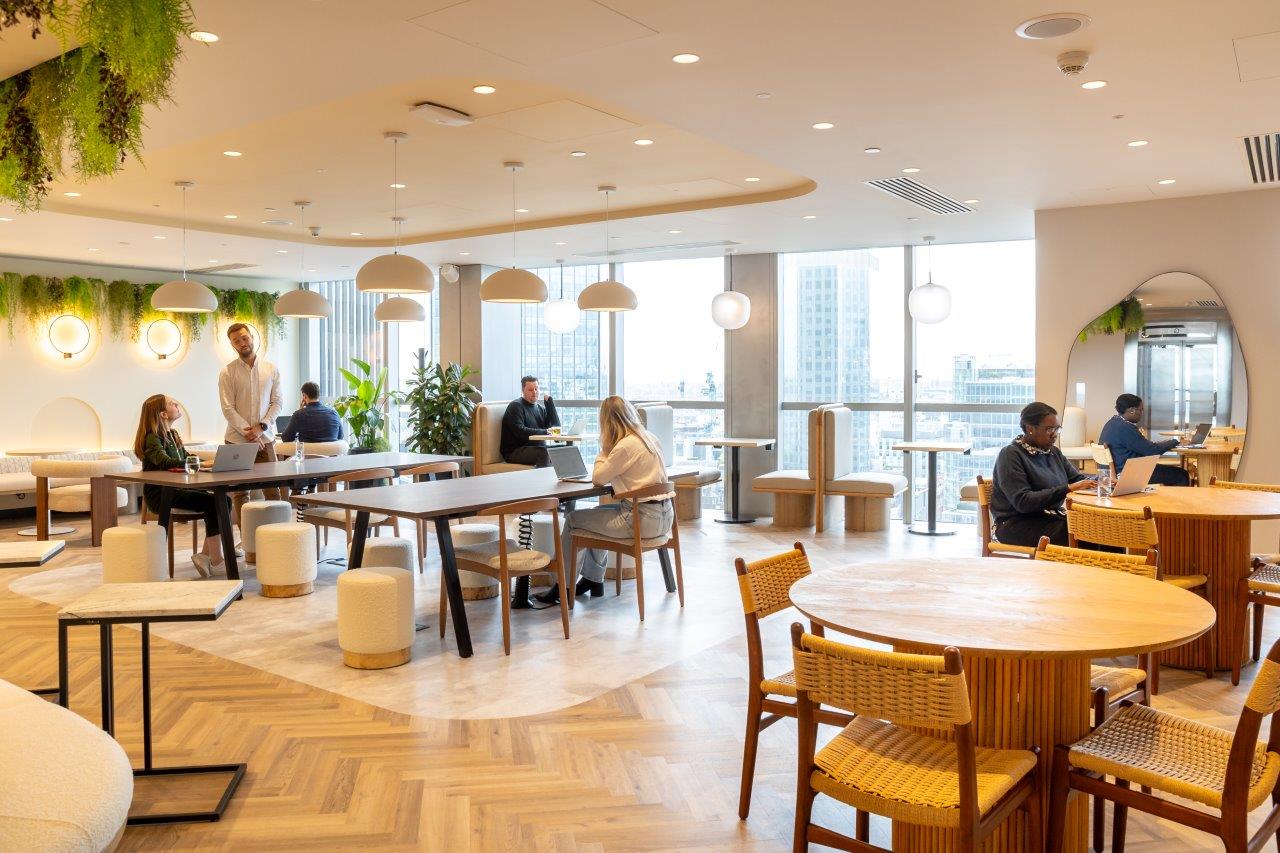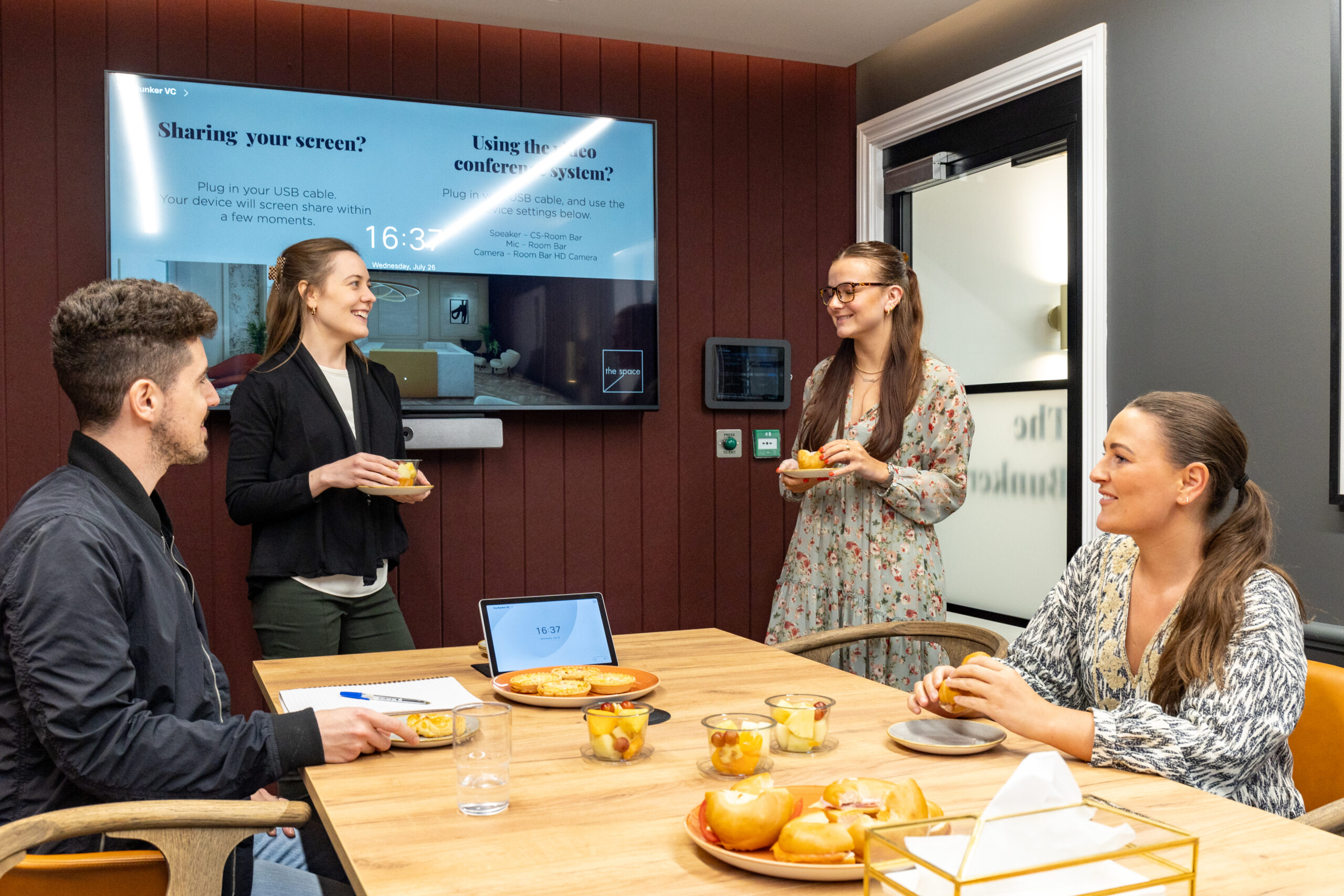How much office space do I need?
23rd August 2018

Whether you’re relocating to a new office, or your company’s moving into its first ever workspace, you need to give serious consideration to how much office space you actually need. Having too little space could negatively impact your business by reducing the productivity of employees, whereas too much space may not be financially prudent. Read on to learn how to choose a perfectly sized workspace for your business.
Jump to section:
- How to work out how much space you’ll need
- Space guidelines for communal areas
- Other key considerations
How to approximate how office much space you need
The commercial property industry typically uses square footage for measuring office space which is a familiar concept for many. However, it can still be difficult to tell whether you’re getting good value for money.
A good place to start when approximating how big your office needs to be is to look at the law on space requirements. According to Article 10 of the Workplace (Health Safety and Welfare) Regulations 1992, workers should each have a minimum of 40 square feet of workspace in an office area. This only accounts for desk space, however, and the optimum overall space each employee should have is around 100 square feet. Ideally, each employee should have 50 square feet for actual desk space, plus an extra 50 square foot for the kitchen, meeting rooms and other communal areas of the office.
If you’re in London however, the capital’s high average rental prices often mean businesses make use of cost-effective spaces which typically work out at around 70-80 square feet per person. These workspaces utilise space-saving solutions, such as reducing storage facilities, while others operate using hot-desk arrangements where employees are free to work remotely in order to free up space. What you ultimately decide on depends on your budget and how much space you’re prepared to give your staff, but you should be aware of both legal requirements and the potential for flexible arrangements.
To figure out whether the office you’re considering will accommodate your employees, divide the room’s total volume by the number of people that will be working in it. If this works out less than the optimum amount you can afford to give your staff, you’ll need to look elsewhere.
Guidelines for communal spaces and meeting rooms
Keeping the 100 square feet per worker (or 70-80 square feet if you’re in London) in mind, you’ll also need to take into account the amenities you’ll require. Below, we’ve compiled a list of standard office amenities you might consider and how much space they typically occupy, giving you an idea of the amount of extra space you’ll need.
Small meeting room (2 to 4 people): 100 square feet
Large meeting room (4 to 8 people): 150 square feet
Boardroom (15 to 20 people): 220 square feet
Conference room (20 to 30 people): 300 square feet
Manager’s office: 100 square feet
Kitchen: 100 square feet
Other key considerations
Besides the actual measurements of the office and the number of employees you currently have, there are a number of other considerations you should take into account when deciding on how much office space you need:
What is the shape of the office?
It’s rare to find an office that is entirely rectangular. In many cases, square footage is not actually “square” due to irregularly shaped floor plans, rendering some of the area unusable as desk space. In addition to looking at how large an office floor plan is, you should also consider ceiling heights. For instance, loft offices may have areas that are too low to accommodate desks.
It may also be the case that some sections of the office are far away from windows and natural light. It’s not advisable to use these areas as permanent desk space, particularly considering the potential effects of lack of natural light exposure during the day.
Do you require an open plan or cubicle style office?
Office layouts have transformed over time, becoming more flexible and adapting to cater to modern working arrangements such as co-working and hot-desking. However, the open-plan layouts which have become popular in startups and small businesses may not be suitable or cost-effective for all business types.
If you opt for a traditional cubicle-style layout, you will need to consider the spatial requirements of the individual cubicles and work out how many of these can fit into the space. Furthermore, as most office spaces are not completely rectangular, you will also need to strategise how and where these cubicles will fit into the space without the office becoming too cramped.
Open plan layouts tend to be more flexible than cubicle layouts, as you are not burdened with the specific size restrictions of the cubicle. Instead, desks and workspaces can be arranged as you see fit, as long as it provides each employee with enough space to work efficiently. As mentioned earlier, businesses that operate with a flexible working model such as hot-desking and those that allow employees to work remotely can afford to rent less space.
Is there room for growth?
Moving into a new office probably means your company is expanding and you therefore need the extra space. If this is the case, it is essential you take into account your company’s potential future growth when choosing a new office. After all, it would be a pointless exercise if you have to again relocate office soon after this move.
To be prepared for growth, you should rent an office with more space than you currently need. This will be a great investment in the long run, and you could even sublet any empty space you have in order to recoup some of the costs. Alternatively, you could simply give employees more space than they need, but be sure to make clear that they won’t enjoy this luxury long term.
Finding the right-sized office for your business can be tricky, but by using the above guidelines you should have a clearer idea of how much space you need.
Here at Landmark, we have a range of different sized serviced offices available for both small and large businesses. Get in touch today to see how we can help your company find a new home.

